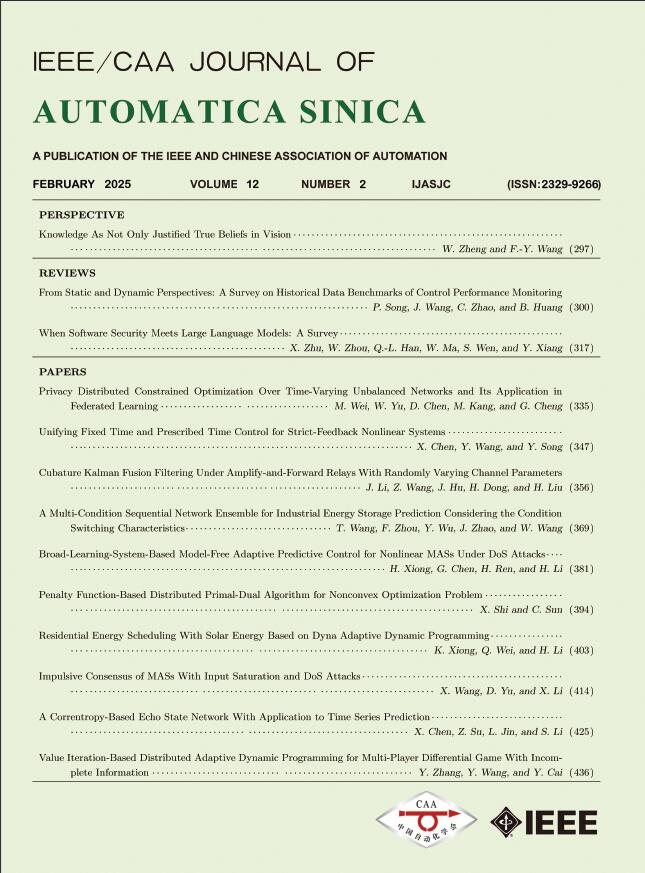 Volume 12
Issue 2
Volume 12
Issue 2
IEEE/CAA Journal of Automatica Sinica
| Citation: | Z. Wang, H. Zhang, C. Yang, and X. Cao, “Improved zero-dynamics attack scheduling with state estimation,” IEEE/CAA J. Autom. Sinica, vol. 12, no. 2, pp. 472–474, Feb. 2025. doi: 10.1109/JAS.2024.124737 |

| [1] |
S. Zhao, Q. Yang, P. Cheng, R. Deng, and J. Xia, “Adaptive resilient control for variable-speed wind turbines against false data injection attacks,” IEEE Trans. Sustain. Energy, vol. 13, no. 2, pp. 971–985, Jan. 2022. doi: 10.1109/TSTE.2022.3141766
|
| [2] |
X.-M. Zhang, Q.-L. Han, X. Ge, D. Ding, L. Ding, D. Yue, and C. Peng, “Networked control systems: A survey of trends and techniques,” IEEE/CAA J. Autom. Sinica, vol. 7, no. 1, pp. 1–17, 2020. doi: 10.1109/JAS.2019.1911651
|
| [3] |
H. Shim, J. Back, Y. Eun, G. Park, and J. Kim, “Zero-dynamics attack, variations, and countermeasures,” in Secur. Resilience of Control Syst., Cham, Switzerland: Springer Cham, 2022, pp. 31–61.
|
| [4] |
Y. Chen, S. Kar, and J. M. Moura, “Dynamic attack detection in cyberphysical systems with side initial state information,” IEEE Trans. Autom. Control, vol. 62, no. 9, pp. 4618–4624, Nov. 2016.
|
| [5] |
S. Weerakkody, X. Liu, and B. Sinopoli, “Robust structural analysis and design of distributed control systems to prevent zero dynamics attacks,” in Proc. IEEE Conf. Decis. Control, Melbourne, Australia, Dec. 2017, pp. 1356–1361.
|
| [6] |
Y. Zhu, H. Zhang, H. Li, J. Zhang, and D. Zhang, “Optimal jamming strategy against two-state switched system,” IEEE Commun. Lett., vol. 26, no. 3, pp. 706–710, 2022. doi: 10.1109/LCOMM.2022.3142080
|
| [7] |
Z. Guo, D. Shi, K. H. Johansson, and L. Shi, “Optimal linear cyber-attack on remote state estimation,” IEEE Trans. Control of Netw. Syst., vol. 4, no. 1, pp. 4–13, 2017. doi: 10.1109/TCNS.2016.2570003
|
| [8] |
Z. Wang, H. Zhang, X. Cao, E. Liu, H. Li, and J. Zhang, “Modeling and detection scheme for zero-dynamics attack on wind power system,” IEEE Trans. Smart Grid, vol. 15, no. 1, pp. 934–943, 2024. doi: 10.1109/TSG.2023.3279878
|
| [9] |
D. Simon, Optimal State Estimation: Kalman, H Infinity, and Nonlinear Approaches. Hoboken, USA: John Wiley & Sons, 2006.
|